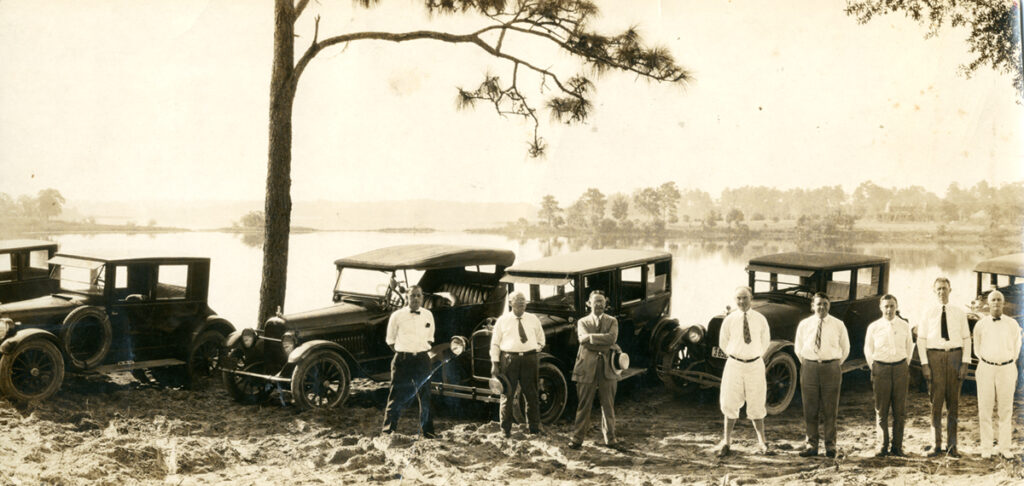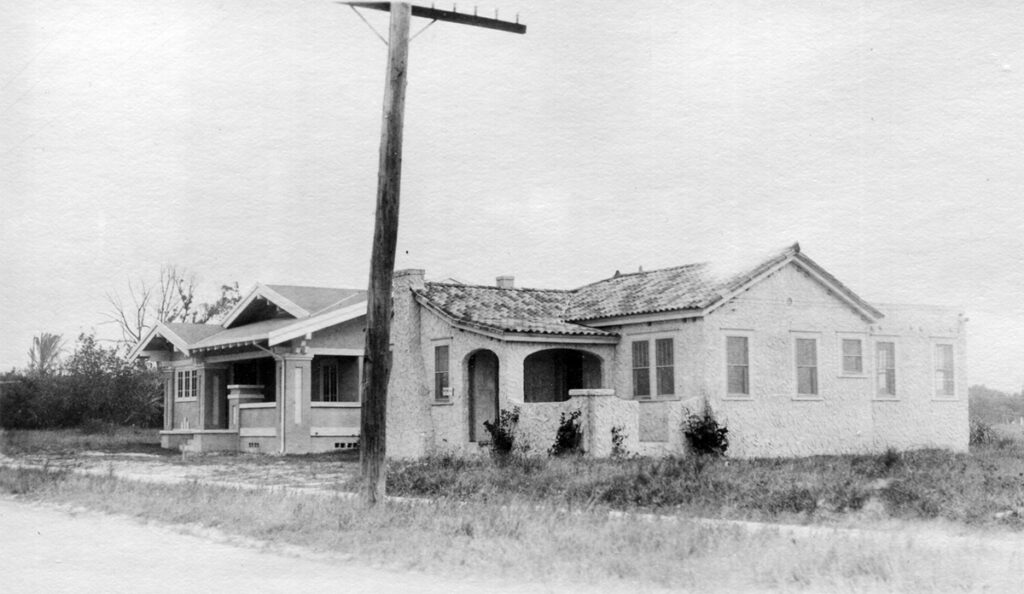By Tana Mosier Porter from the Fall 2024 edition of Reflections Magazine
In 1924, developers officially kicked off and named the Orlando neighborhood that soon manifested the look and feel of a small town.
One hundred years ago the Cooper-Atha-Barr Real Estate and Mortgage Company broke ground for a new residential development on a 40-acre parcel of land on the shore of Lake Ivanhoe, just north of Orlando. They laid out 201 building lots along streets named Princeton, Harvard, Dartmouth, Yale, and Stetson, following the pattern previously established by Walter W. Rose in his adjoining Rose Terrace development. The Cooper-Atha-Barr Company, better-known as CABCO, called their new venture “College Park.”
Walter Rose had recognized the potential of the desirable land north of Lake Ivanhoe, platting his first Rosemere subdivision in 1921, the second and third in 1923, and two more plus Rose Terrace in 1924. Rose introduced the college street names in his developments as an interesting feature that he hoped might help him sell building lots. Like most others, Rose developments included elaborate entrance gates, paved streets, water, lights, and sewers. The developers built few houses, selling instead to builders and individuals.
CABCO followed its first College Park plat, recorded on Feb. 2, 1925, with four more plats in 1925 and four in 1926, all named variations of College Park and all with streets named for colleges. Between Walter Rose and the Cooper-Atha-Barr Company, by 1927 houses dotted many of the blocks of the new developments. The architectural styles varied, but Craftsman and Mediterranean Revival bungalows predominated in the early years. The College Park development, with its mostly affordable single-story houses, gave the new community its identity as a place for young families. Its name became official 30 years later with the naming of the College Park post office.

The Cooper-Atha-Barr Real Estate and Mortgage Company’s groundbreaking for the College Park subdivision took place along Lake Ivanhoe at Dartmouth Avenue in February 1925.
An influx of newcomers
College Park owes its beginning and much of its original growth to the Great Florida Land Boom of the 1920s. The end of the First World War, the booming economy, and the automobile brought a steady influx of people to Florida, many of them looking for adventure, but most looking for a new start. New residential developments all over Florida provided the housing the new arrivals needed. Many years separated the 20th-century migration and the first such migration in the 19th century, but the pioneer people came for the same reasons: economic opportunity and a new start in a new land.
Squatters and homesteaders opened the land just north of Orlando for town-builders who established Formosa north of Lake Ivanhoe and Fairvilla near Lake Fairview in the 1870s. Citrus groves, pineries, and vineyards thrived in the vacant land between the two towns. Railroads arrived in the 1880s, bringing settlers and tourists, and more importantly, the economic boost of improved shipping of citrus fruit to northern markets. Businesses and population burgeoned in Formosa following the opening of the Seventh-day Adventist Sanitarium in 1908, while in 1912 Jewish settlers established dairy farms in the more rural Fairvilla.
East of Fairvilla, in 1886, investors from New York state purchased 200 acres of land and planted Niagara white grapes, establishing the Niagara Vineyard in part of what is now the 14th, 15th, and 16th greens of the Dubsdread Golf Course. The venture failed when they found no market in Florida for grapes too fragile for shipment north. In 1910 the Wright-Rundell Company platted the property into the Villa Farms: 65 farm-lots of 5 acres each. Only a few of the parcels had sold in 1922, when the New York interests who still owned the property sold it to the Orlando Golfers Association. In 1924 it became part of Carl Dann’s Dubsdread Golf Course and the Golfview residential subdivision. The following year, Carl Tegder platted Palm Terrace on Lake Silver.
In 1923 the Orlando City Council voted to extend the city limits to Par Street, taking in most of what became College Park. North of the city limits the acres of level ground and sparse population lent itself to such ventures as farms, vineyards, and golf courses, while to the south, the hilly land around Lakes Ivanhoe, Concord, and Adair, already annexed to Orlando in 1911, invited denser residential development. Concord Park, platted in 1909 between Lake Concord and Colonial Drive, became a large development extending south to Lake Dot. North and west of Concord Park, Edgewater Heights occupied an especially attractive hillside along Lake Adair.
In 1925 the plat owners hired a developer to design and market a landscaped neighborhood of wide, curving streets that attracted affluent buyers and well-known architects. Also platted in 1925, Adair Park and Shore Crest filled in land north of lakes Concord and Ivanhoe.

The developers of College Park created new streets and houses among the native pine trees.
Creating a community
The older settlements of Formosa and Fairvilla and the many newer residential developments surrounded the Cooper-Atha-Barr Company’s nine College Park Additions, which became the nucleus of the new community of College Park. In addition to its central location, CABCO’s developments dominated in sheer size and ambition. The company advertised that it would have more than a hundred houses completed and another hundred under construction by the end of 1925. By 1927, the company had purchased properties and platted nearly 1,500 building lots on both sides of Edgewater Drive, the de facto Main Street.

In College Park’s early days, only two homes occupied this block, but the power pole indicated the availability of electricity.
Stability and diversity
A strong sense of community developed early in College Park, with schools and churches established in the first year or two. Businesses clustered along Edgewater Drive, providing many of the services and necessities of daily life. The older towns and surrounding developments offered both stability and diversity to the first homebuyers in the CABCO neighborhoods, many of them families with young children who were new to Florida. As Walter Rose had predicted, the college street names attracted residents and also provided an additional unifying influence as the College Park neighborhood developed the look and feel of a small town.
In another year or two, the housing market had cooled after a devastating Miami hurricane in 1926 warned that Florida was not the paradise the realtors had advertised, and the looming Great Depression of the 1930s sent many companies and individuals into foreclosures and bankruptcies. The Cooper-Atha-Barr Real Estate and Mortgage Company failed, but its creation, College Park, survived to flourish in another century.

